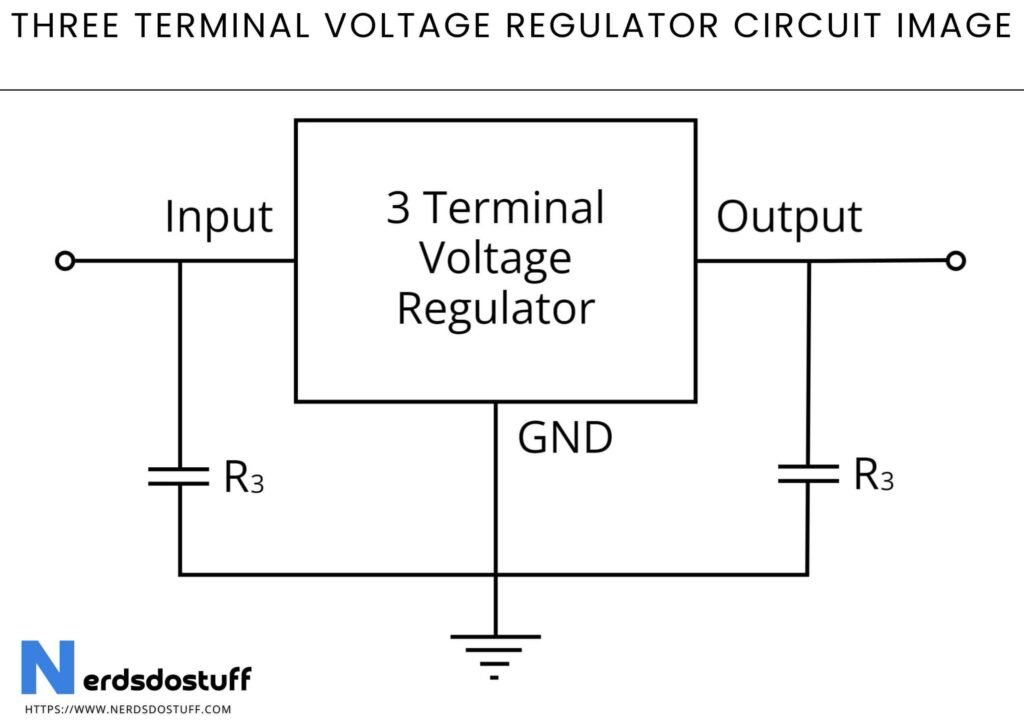What is Three Terminal Voltage Regulator ?
A three-terminal voltage regulator is a type of voltage regulator integrated circuit (IC) that provides a regulated output voltage with only three external connections: input, ground, and output. These regulators are commonly used in electronic circuits to provide a stable and reliable voltage supply to various components.
The three-terminal voltage regulator typically consists of an internal voltage reference, a pass transistor, and a feedback mechanism. The input terminal is connected to the unregulated voltage source, such as a battery or power supply, while the ground terminal is connected to the circuit’s ground reference. The output terminal provides a regulated voltage that remains constant even when the input voltage or load conditions change.
Three Terminal Voltage Regulator Circuit

Working of Three Terminal Voltage Regulator
The working principle of a three-terminal voltage regulator involves maintaining a stable output voltage despite variations in input voltage or load conditions. This is achieved through a feedback mechanism that continuously compares the output voltage to a reference voltage and adjusts the regulator’s operation accordingly.
In a fixed three-terminal voltage regulator, the internal circuitry consists of a voltage reference, a pass transistor, and a feedback loop. When the input voltage is applied, the pass transistor controls the flow of current to the load based on the feedback received from the output voltage. If the output voltage drops below the desired level, the feedback mechanism signals the pass transistor to increase its conductivity, allowing more current to flow to the load and raising the output voltage. Conversely, if the output voltage exceeds the desired level, the feedback mechanism reduces the conductivity of the pass transistor, limiting the current flow and lowering the output voltage.
In an adjustable three-terminal voltage regulator, additional components such as resistors or potentiometers are included to allow users to set the desired output voltage within a certain range. By adjusting these external components, users can modify the feedback voltage applied to the regulator, thereby changing the regulated output voltage level.
